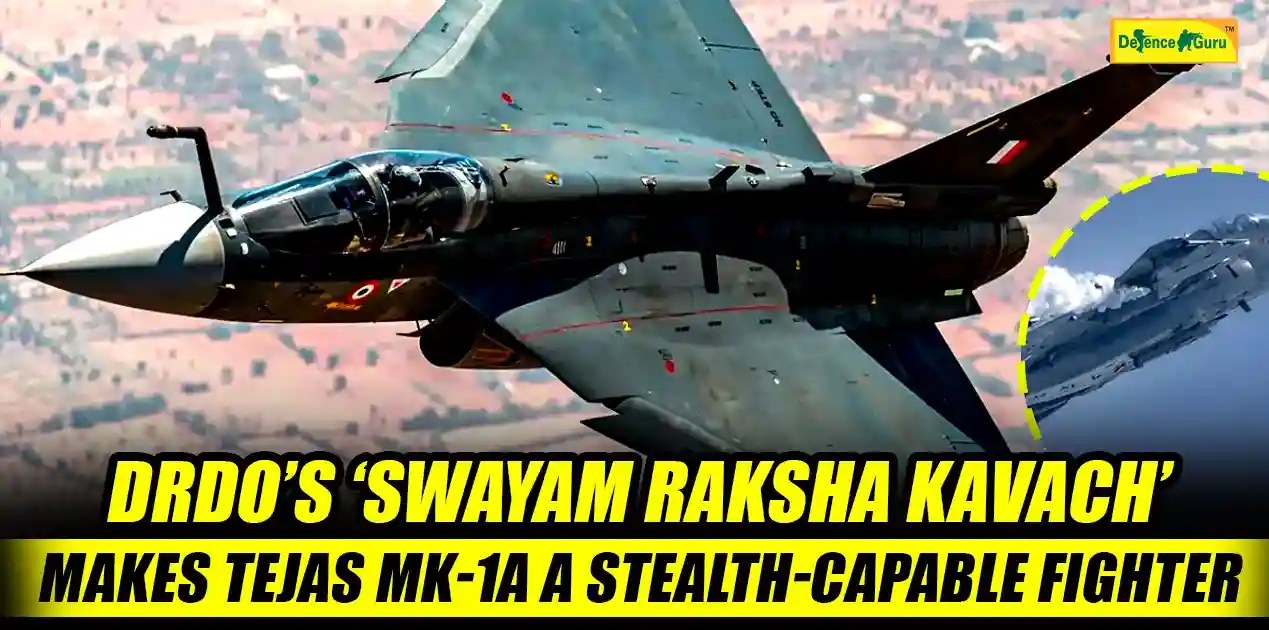‘Swayam Raksha Kavach’ Transforms Tejas Mk-1A into a Stealth-Ready Fighter Jet
In a path-breaking achievement for India's defence aviation sector, the Defence Research and Development Organisation has begun flight testing its advanced Electronic Warfare suite- 'Swayam Raksha Kavach'-on theTEJAS MK-1A Light Combat Aircraft. This indeed raises the indigenous fighter aircraft to stealth-capable status for the first time in the annals of India's aerospace history.
The aptly named ‘Self-Defence Shield’ system has been engineered to make the TEJAS MK-1A nearly invisible to enemy radar systems while safeguarding it from missile and electronic attacks. Developed entirely within India, this breakthrough gives the Indian Air Force a critical stealth advantage over other countries more than a decade before its fifth-generation Advanced Medium Combat Aircraft (AMCA) becomes operational. Built by Hindustan Aeronautics Limited (HAL), the TEJAS MK-1A is already considered the most advanced homegrown fighter. With the addition of Swayam Raksha Kavach, it now reaches new heights in electronic survivability, operational dominance, and mission precision.
The system is comprised of two dominant subsystems at its core:
Radar Warning Receiver (RWR): detects and warns pilots when hostile radar locks onto the aircraft, thus allowing immediate countermeasures.
ASPJ stands for Advanced Self-Protection Jammer. This is a jammer fitted with the latest DRFM technology, which creates false jamming signals to mislead hostile radar and disturb guided missile signals.
Put together, these technologies create a form of “electronic stealth” that reduces the aircraft’s radar cross-section by confusing adversary sensors rather than depending on pure physical stealth materials or design. This dynamic approach enables TEJAS MK-1A to operate in highly contested airspace with more freedom and safety.
The development of the Swayam Raksha Kavach began at DRDO's Centre for Airborne Systems (CABS) in Bengaluru in 2021. With successful flight trials underway, the system is likely to enter full-scale production and operational service by 2026 — placing the TEJAS MK-1A as India's most advanced combat aircraft ever. The integration also brings on board upgraded avionics and cockpit interfaces. Threat detection, countermeasures, and pilot situational awareness now tie into one intelligent system-driving India into the world of cognitive electronic warfare.
In September 2025, the government cleared the purchase of 97 additional TEJAS MK-1A aircraft by HAL — 68 single-seat and 29 twin-seat variants. These next-generation jets will roll out with factory-installed Swayam Raksha Kavach systems, ensuring that future IAF squadrons are fully equipped for the electronic battlefield. Defence experts believe this milestone bridges India's technological gap ahead of the AMCA's debut and demonstrates the nation's increasing capability in indigenous aerospace innovation. With Swayam Raksha Kavach, the TEJAS MK-1A not only gains superior survivability but becomes a truly modern, stealth-enabled multirole fighter, underlining India's march toward complete self-reliance in defence technology.
Read more:
Indian Navy’s AI-Powered Stealth Drone ‘Abhimanyu’ to Join Carrier Fleet by 2026
DRDO leads at ESTIC 2025 with a focus on Electronics & Semiconductor Manufacturing

















